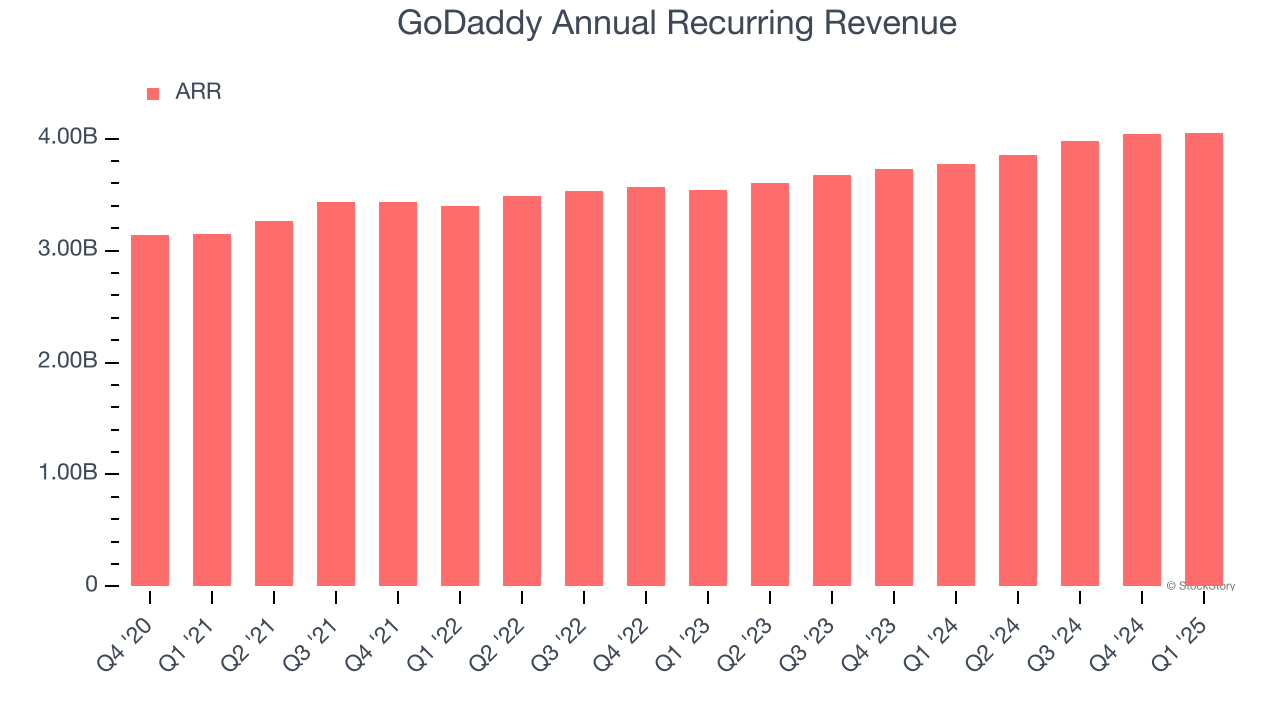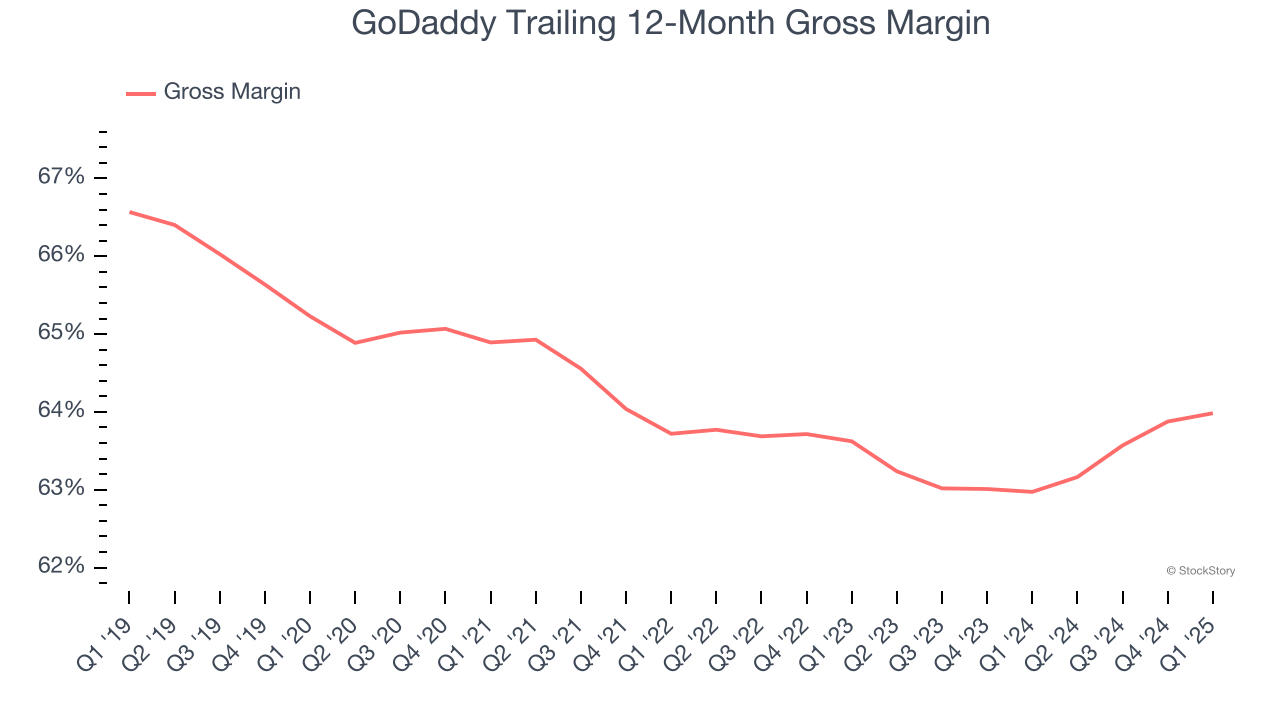
GoDaddy trades at $183.97 per share and has moved almost in lockstep with the market over the last six months. The stock has lost 6.8% while the S&P 500 is down 2.4%. This might have investors contemplating their next move.
Is now the time to buy GoDaddy, or should you be careful about including it in your portfolio? Dive into our full research report to see our analyst team’s opinion, it’s free.
Why Is GoDaddy Not Exciting?
Even with the cheaper entry price, we don't have much confidence in GoDaddy. Here are three reasons why we avoid GDDY and a stock we'd rather own.
1. Weak ARR Points to Soft Demand
While reported revenue for a software company can include low-margin items like implementation fees, annual recurring revenue (ARR) is a sum of the next 12 months of contracted revenue purely from software subscriptions, or the high-margin, predictable revenue streams that make SaaS businesses so valuable.
GoDaddy’s ARR came in at $4.05 billion in Q1, and over the last four quarters, its year-on-year growth averaged 7.8%. This performance was underwhelming and suggests that increasing competition is causing challenges in securing longer-term commitments. 
2. Projected Revenue Growth Is Slim
Forecasted revenues by Wall Street analysts signal a company’s potential. Predictions may not always be accurate, but accelerating growth typically boosts valuation multiples and stock prices while slowing growth does the opposite.
Over the next 12 months, sell-side analysts expect GoDaddy’s revenue to rise by 7.1%, close to its 6% annualized growth for the past three years. This projection is underwhelming and indicates its newer products and services will not accelerate its top-line performance yet.
3. Low Gross Margin Reveals Weak Structural Profitability
For software companies like GoDaddy, gross profit tells us how much money remains after paying for the base cost of products and services (typically servers, licenses, and certain personnel). These costs are usually low as a percentage of revenue, explaining why software is more lucrative than other sectors.
GoDaddy’s gross margin is substantially worse than most software businesses, signaling it has relatively high infrastructure costs compared to asset-lite businesses like ServiceNow. As you can see below, it averaged a 64% gross margin over the last year. That means GoDaddy paid its providers a lot of money ($36.02 for every $100 in revenue) to run its business. 
Final Judgment
GoDaddy’s business quality ultimately falls short of our standards. After the recent drawdown, the stock trades at 5.4× forward price-to-sales (or $183.97 per share). Investors with a higher risk tolerance might like the company, but we think the potential downside is too great. We're pretty confident there are superior stocks to buy right now. We’d suggest looking at the most entrenched endpoint security platform on the market.
Stocks We Would Buy Instead of GoDaddy
Donald Trump’s victory in the 2024 U.S. Presidential Election sent major indices to all-time highs, but stocks have retraced as investors debate the health of the economy and the potential impact of tariffs.
While this leaves much uncertainty around 2025, a few companies are poised for long-term gains regardless of the political or macroeconomic climate, like our Top 9 Market-Beating Stocks. This is a curated list of our High Quality stocks that have generated a market-beating return of 176% over the last five years.
Stocks that made our list in 2020 include now familiar names such as Nvidia (+1,545% between March 2020 and March 2025) as well as under-the-radar businesses like the once-micro-cap company Kadant (+351% five-year return). Find your next big winner with StockStory today.
